

- Top
- Technical Info
- Connector Glossary
- High speed jumper solution
High speed jumper solution
The high-speed jumper solution provided by IRISO, Ltd. separates high-speed signals from the board via FPC/FFC, contributing to flexibility in customer design and cost optimization.
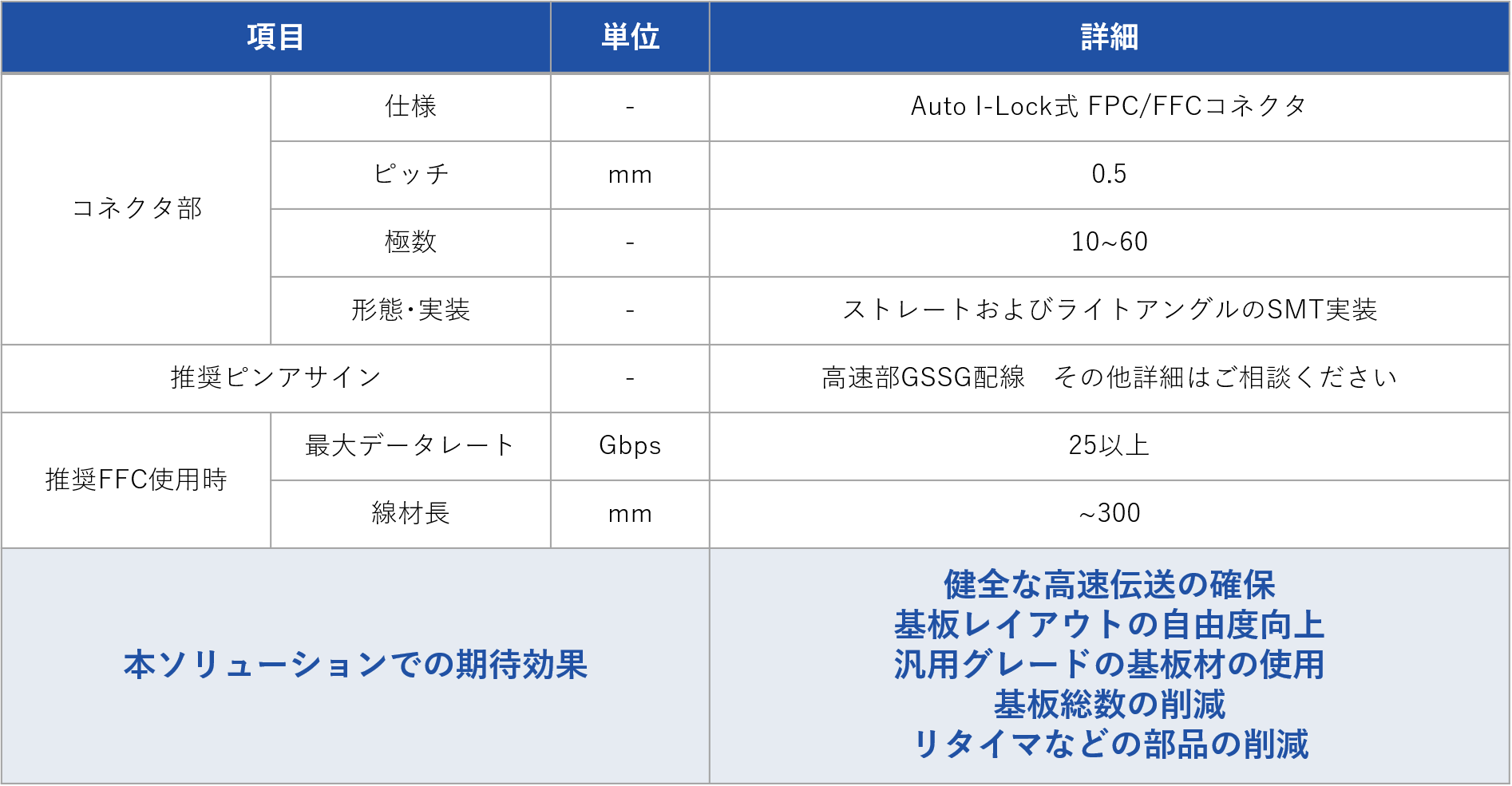

Development background
With high-speed signals reaching 25Gbps, signal loss in traces on the board becomes a problem. The longer the path of the signal on the board, the more pronounced the effect, so the designer has to worry about the layout of the FPGA and interface connector, select expensive low-loss materials, and add parts to refresh the signal. You will be forced to make a choice such as
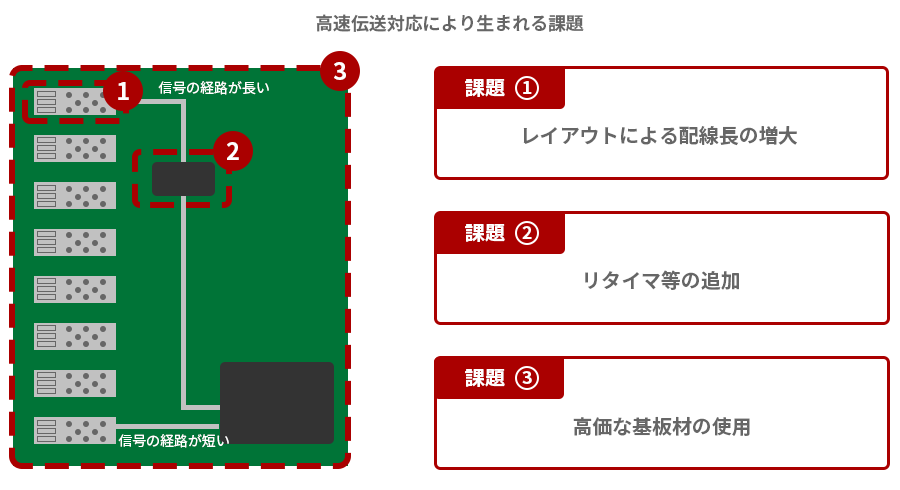
There are two major factors that cause signal loss on transmission lines: resistance loss due to the resistance value of metals and dielectric loss due to dielectric materials around the transmission line. issues are getting bigger. This dielectric loss depends on the parameters of "(relative) permittivity" and "dielectric loss tangent" which each material has its own value.
The aforementioned low-loss materials have these two parameters reduced from conventional substrate materials, and better materials are being developed one after another. However, due to the compatibility with the mechanical performance as a substrate, the performance of other dielectric materials for transmission lines such as electric wires is degraded, and there is a problem that it inevitably becomes expensive.
Therefore, By "evacuating only the high-speed transmission part on the transmission line other than the board", we should be able to provide a cheaper and more reliable high High-speed Transmission Solution. And even in that transmission line FPC (flexible printed circuit) or FFC (flexible flat cable) The "high-speed jumper solution" introduced this time was developed by combining a wiring material called IRISO 's connector. is.
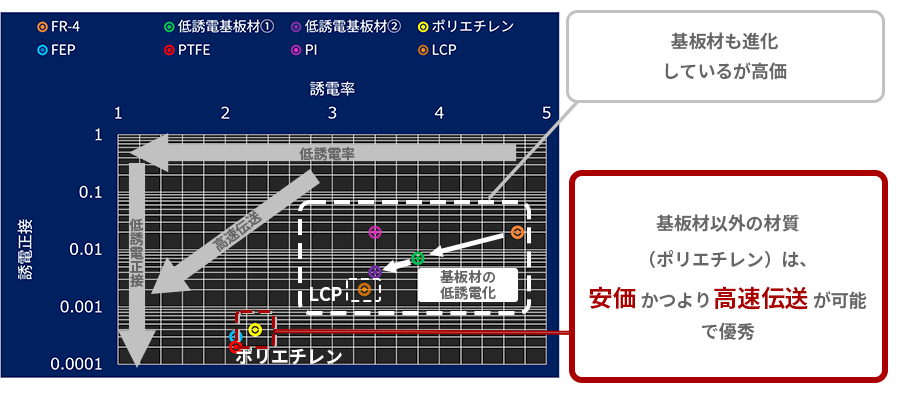
concept
High-speed jumper solutions provided by IRISO, Ltd. separate high-speed signals from the board via FPC/FFC, contributing to flexibility in customer design and cost optimization.
three points
- 1. Selection of low-cost, high-performance/low-loss wiring materials
- 2. Connect with a low-reflection connector
- 3. Providing optimal design solutions
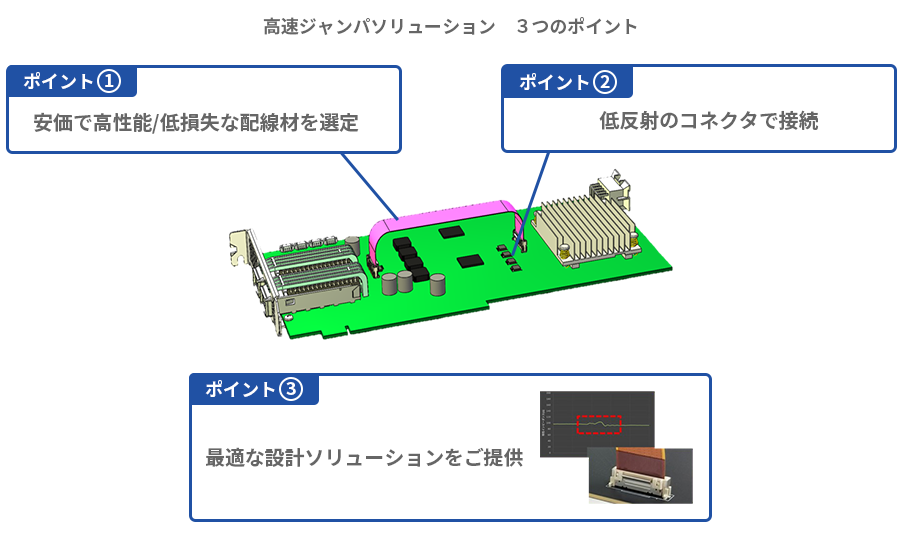
We are also preparing a jumper that can jumper 25Gbps signals up to about 300mm. As shown in the graph below, we have succeeded in reducing loss by about 40% at the Nyquist frequency for a typical low-loss substrate of the same length (using FFC).
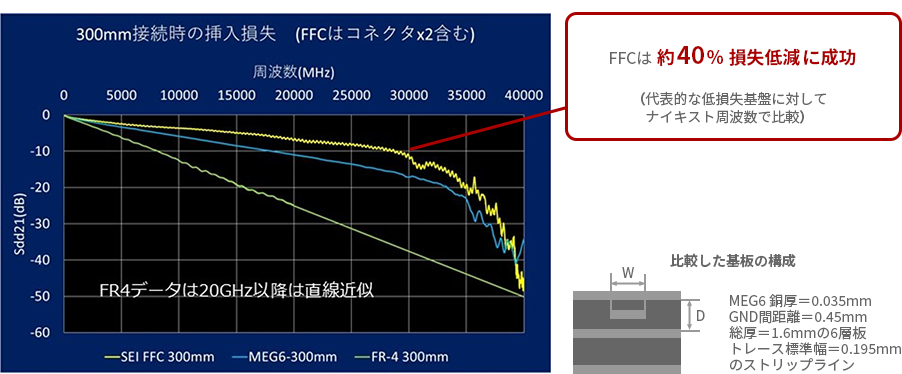
Now, let me introduce each of the three points in detail.
1. Selection of low-cost, high-performance/low-loss wiring materials
Products close to the concept of high-speed jumper solutions are actually being commercialized mainly by overseas companies in the same industry. However, most of them are wire-based high-speed cable solutions using so-called "round wire" conductors, which are relatively expensive solutions. In addition, it seems that there are issues such as the size feeling more than a certain level in order to ensure performance, and the routing becoming complicated.

Therefore, IRISO turned its attention to FPC/FFC, for which we have continuously developed connection technology. In recent years, FPCs have started to use LCPs, which are as good as low-loss substrate materials, even if they are not as good as wire materials. For FFC, which has a manufacturing method that is closer to that of electric wires, a material approaching that of electric wire insulation materials has been developed.
As the dielectric loss becomes smaller, the resistive loss becomes non-negligible again. From the viewpoint of resistance loss, electric wires using round wires, which can have a larger conductor cross-sectional area at the same packaging density, are superior to FPCs and FFCs, which are characterized by having "thin and flat" conductors as much as possible. has been considered advantageous. However, today, as the speed increases and the influence of the skin effect at high frequencies becomes more pronounced, resistive loss now depends more on the surface area than the cross-sectional area of the conductor. Therefore, the gap is narrowing, and the needs are reversing.
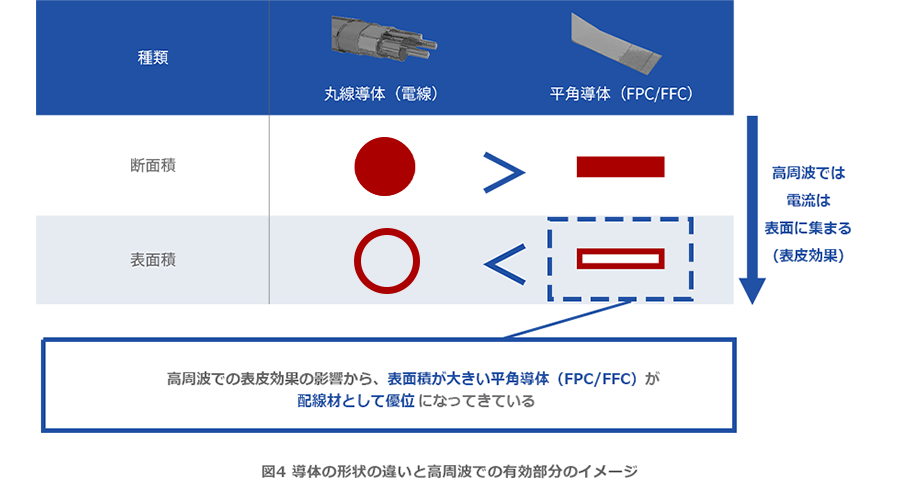
2. Connect with a low-reflection connector
Disturbance of characteristic impedance becomes conspicuous in connectors, especially at the connecting part.
In the development of this solution, it was necessary to develop a low-reflection connector and proceed with development while checking the matching with the specified wire material. In particular, regarding FFC, which is expected to be cheaper and have higher transmission characteristics, it was developed for a longer distance in a lower frequency band than the purpose of this time, so with the cooperation of several suppliers Conducted evaluation and development. As a result, we were able to release a connector with greatly improved performance compared to the conventional high-speed transmission type.
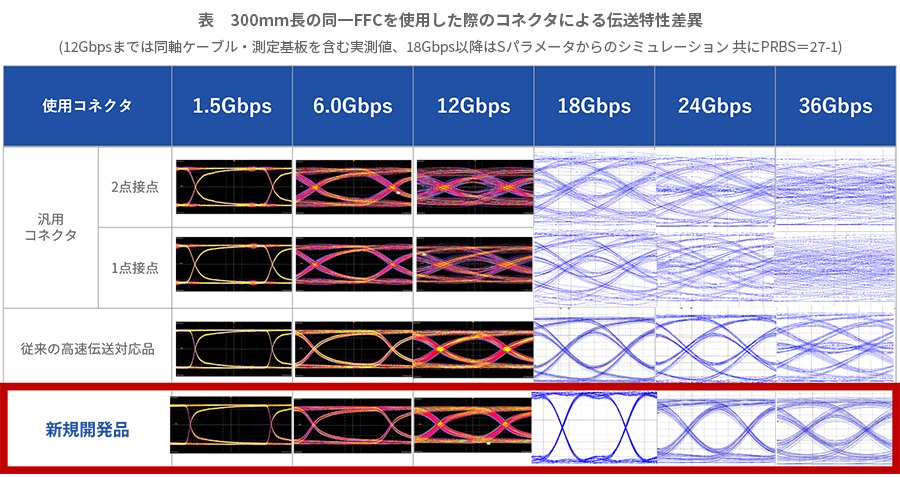
3. Providing optimal design solutions
This development has been completed as a "solution" rather than a single product through comprehensive performance verification.
We created and evaluated wires and connectors that should actually be used, as well as an evaluation board based on IRISO' recommended design.
The figure below is an evaluation example for CEI 28G-SR, an on-board 28Gbps chip-to-chip standard for 100G Ethernet.
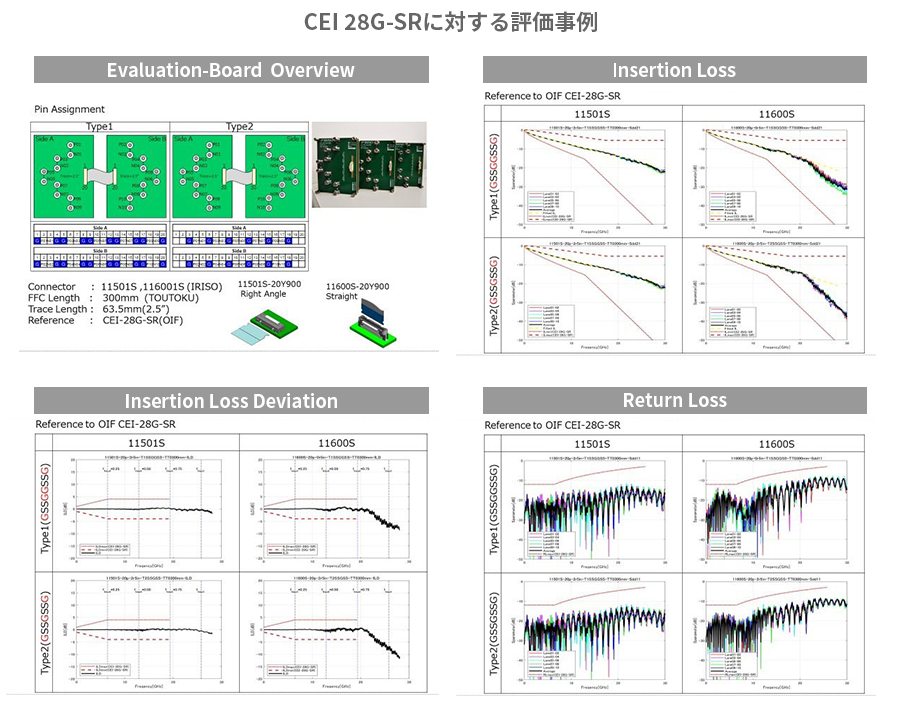
On the other hand, in order to support customer's own simulation, etc., we also manufacture a separate test fixture that evaluates the pure characteristics of the product. We extract the S-parameters and provide them to our customers. (Although the number is limited, we are also lending out substrates to customers/supporting 30 poles. Please use the inquiry form or contact our sales staff.)
In addition, regarding pin assignments such as when multiple signals and power are transmitted, we make proposals including additional connectors through additional evaluations.
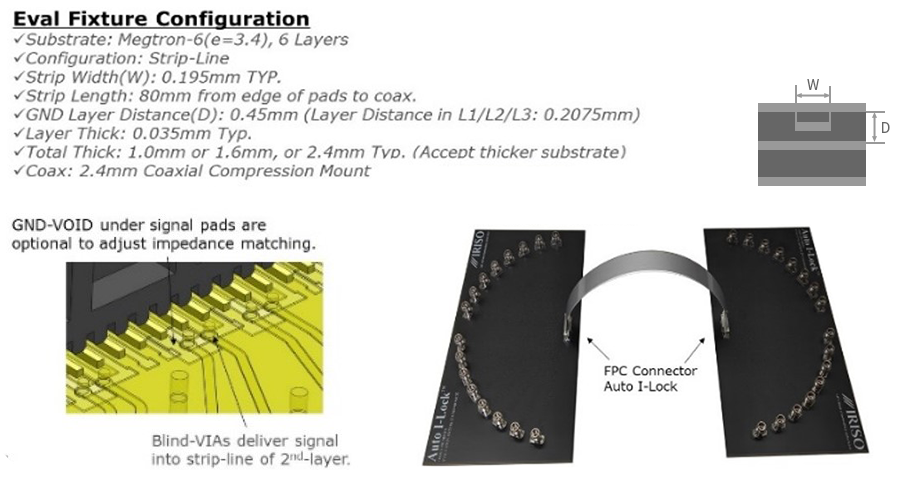
In this way, we not only provide individual connector products, but also follow all the know-how of IRISO, Ltd., and contribute to customers' design freedom and cost optimization in cooperation with cooperating manufacturers. We propose to our customers a "high-speed jumper solution" that
Related Links
In addition to the solutions introduced in this article, you can see columns and product lineups related to High-speed transmission Connector.
If you would like to find out more, you can search the information on the site here.

